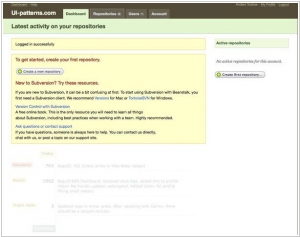Beanstalk vs Bitbucket
May 28, 2023 | Author: Michael Stromann
13
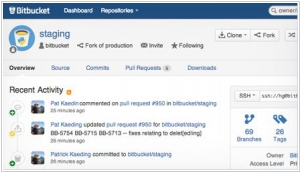
Bitbucket is a free code DVCS hosting site for Git and Mercurial. Manage your development with a hosted wiki, issue tracker and source code. Host, manage, and share Git and Mercurial repositories in the cloud. Free, unlimited private repositories for up to 5 developers give teams the flexibility to grow and code without restrictions.
Beanstalk and Bitbucket are both popular version control systems, but they have different focuses and feature sets. Beanstalk is a simple and user-friendly version control system that offers features such as code hosting, repository management, and collaboration tools. It provides an intuitive interface for managing code repositories, reviewing changes, and collaborating with team members. Beanstalk is often chosen by small to medium-sized teams or individuals seeking a straightforward and hassle-free version control solution. On the other hand, Bitbucket is a comprehensive version control platform that offers features such as code hosting, repository management, issue tracking, and continuous integration/continuous deployment (CI/CD) capabilities. It supports both Git and Mercurial repositories and provides a robust set of tools for managing code, collaborating with team members, and automating the development workflow. Bitbucket is often preferred by larger teams or organizations that require advanced features and scalability.
See also: Top 10 Source Code Management tools
See also: Top 10 Source Code Management tools
Beanstalk vs Bitbucket in our news:
2016. Atlassian launches Bitbucket Pipelines
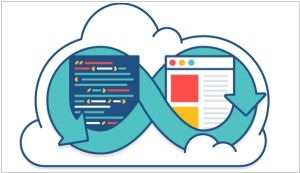
Atlassian has introduced Bitbucket Pipelines, a groundbreaking continuous delivery service seamlessly integrated into the Atlassian-hosted Bitbucket Cloud platform. This powerful feature enables developers to automate their code building and deployment process whenever they make updates to their Bitbucket repositories. As part of the beta phase, Bitbucket Pipelines is available at no cost for developers interested in exploring its capabilities. Additionally, Atlassian has made other notable updates, including the launch of Connect for JIRA Service Desk, which empowers third-party developers to create embeddable add-ons for this service. Moreover, Atlassian has made RADAR, its internal tool for generating API documentation, open source, aligning it with the specifications of the Open API Initiative.
2015. Atlassian merges Bitbucket and Stash developer services
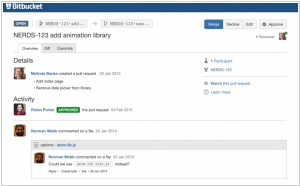
Atlassian has been providing a range of developer services based on Git through its brands Bitbucket and Stash. These services cater to developers who require either cloud-based or on-premises code management solutions. However, the company is now consolidating these brands into a unified Bitbucket platform and introducing several new features for its Git-based services. Additionally, Atlassian is unveiling three significant enhancements for Bitbucket. The first feature is Git Mirroring, designed to simplify and accelerate the usage of Git for distributed teams. The second feature addresses a long-standing challenge of Git—support for large files. Lastly, Bitbucket introduces support for projects, enabling more streamlined organization of complex Git repositories. Notably, Bitbucket now competes with other enterprise Git services, including GitHub Enterprise. Even Microsoft has embraced Git support in its Team Foundation Server products.
2015. Code management service Bitbucket opens to third-party extensions
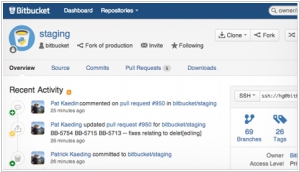
Bitbucket, Atlassian's code management service similar to GitHub, is receiving a significant update this week. The new feature, called Connect for Bitbucket, allows third-party tools to seamlessly integrate their applications directly into the Bitbucket service. Atlassian emphasizes that this integration empowers developers to access all the necessary information for code deployment in a single location, eliminating the need for constant switching between disjointed tools. According to the company, no other product on the market offers this level of integration within the product's user interface. The launch partners for this feature encompass a range of services, including code analytics platforms such as StiltSoft and bitHound, cloud IDEs like Codeanywhere and Codio, and Sourcegraph's code search tool. Currently, there are approximately a dozen available plug-ins, providing users with expanded capabilities and a more streamlined workflow within Bitbucket.
2014. Atlassian brings Stash to large enterprises
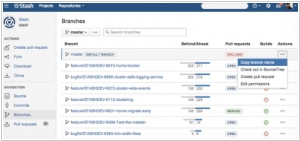
Stash, the code management software by Atlassian designed for Git, originally catered to small teams. However, Atlassian has now introduced Stash Data Center, a Git solution tailored for large enterprises. Unlike the regular Stash service, Stash Data Center is capable of operating on a cluster instead of a single server. This enhancement allows Stash to effortlessly support up to 10,000 developers. Stash Data Center maintains the same interface and functionality as the current version, ensuring a seamless transition for its users. They may observe reduced slowdowns, faster compilation times, and minimal downtime, while their daily workflows remain unaffected. Atlassian expects that Stash Data Center users will deploy the service within their own clusters, protected by firewalls. Additionally, there are plans to enable Stash Data Center to operate on public clouds such as AWS in the future.

